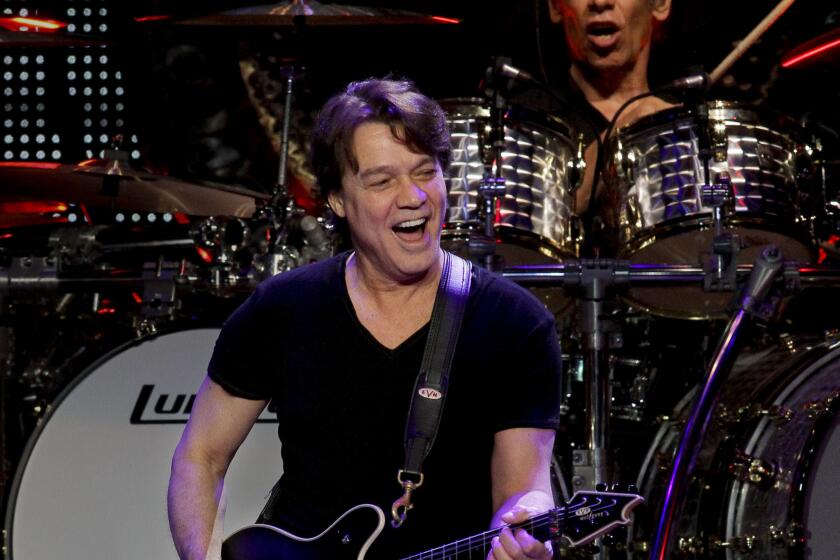Sonny Rollins at His Improvisational Peak
On the rapidly diminishing list of surviving jazz icons from the post-World War II period, tenor saxophonist Sonny Rollins’ name stands out. Approaching his 70th birthday (in September), he continues to be a vital creative artist, capable--in any given performance--of delivering brilliantly imaginative improvising.
But Rollins, and anyone else for that matter, would be hard put to match the music he was producing in the ‘50s and ‘60s. One of the two principal tenor saxophone fountainheads (with John Coltrane) of post-Charlie Parker jazz, he was playing at an astonishingly high level of creativity. Listening to his work from the late ‘50s, in particular, is a revelation. Utterly ageless, it is improvisation so skilled, so imaginative, so completely gripping, that one can only wonder why the young lion tenor players of the ‘90s would make the risky effort to replicate such an incomparable style.
“Sonny Rollins, The Freelance Years: The Complete Riverside and Contemporary Recordings” (****, Riverside/Contemporary) is a five-CD collection of 58 tracks dating to the period between December 1956 and October 1958. It encompasses classic albums including Rollins’ “Way Out West,” “Freedom Suite” “Sonny Rollins and the Contemporary Leaders” and “The Sound of Sonny” as well as excerpts from Thelonious Monk’s “Brilliant Corners,” Kenny Dorham’s “Jazz Contrasts” and Abbey Lincoln’s “That’s Him.” (Note that in some cases alternate tracks are used instead of those originally released.)
Virtually every Rollins solo is definitive: hard-swinging, abundant with ideas, executed with a virtuosity that is constantly at the service of the music rather than as a self-serving display of technique. But what is even more inspiring about these performances is their utter listenability. A good part of Rollins’ genius was his capacity to take listeners along on his flights of improvisation, insisting that they accompany him, sharing the journey, no matter how unfamiliar the musical territory he chose to explore. Equally worth noting, the great majority of his solo work here--especially on his own outings and in the colorful interfacing with Monk--is flat-out superior to what is being performed by most of the tenor saxophone-playing young lions who come to mind.
Although many of these tracks are included in other collections, this compilation, produced lovingly by Eric Miller, is particularly valuable as a concentrated window into a brief but stunningly inventive period when Rollins was at his peak.
The Herbie Hancock electronic experimentation that began with his 1983 “Future Shock” album (and its MTV hit, “Rockit”) may not have had much appeal for his jazz fans. But hearing “Future Shock” and two follow-up albums, “Sound System” (1984) and “Perfect Machine” (1988), (all ***, Columbia Legacy) in retrospect, it seems apparent that Hancock’s (and co-producer Bill Laswell’s) adventurous use of the increasingly sophisticated sound equipment that arrived in the ‘70s and ‘80s had a powerful impact on all the pop mixers, deejays, samplers and studio mavens who followed. That said, however, it has been the rare follower who has managed a comparable level of sheer imagination and energy.
No, this stuff is not “Watermelon Man,” it’s not Herbie with Miles in the ‘60s, and it’s not Hancock and Wayne Shorter doing a duo in the ‘90s. But the albums do reflect a fascination with technology that continues to be a vital Hancock interest. And the determined jazz fan can find--in the midst of the dance rhythms, the turntable scratches, the synth and world beat sounds, and the offbeat samples--unexpected bits and pieces from Shorter (playing the electronic Lyricon), some Miles Davis samples (on “Sound System”) and a turbulent but oddly compelling remake of “Maiden Voyage” (here titled “Maiden Voyage/B.Bop”) on “Perfect Machine.”
As part of the grouping, Columbia Legacy has also released Hancock’s “The Hits” (***). The nine selections, dating between 1973 and 1983, include “Watermelon Man” (in a 1973 rendering), “Rockit” and “Chameleon,” with Carlos Santana, Wah-Wah Jackson and Ray Parker Jr. as participants.”
More to Read
The biggest entertainment stories
Get our big stories about Hollywood, film, television, music, arts, culture and more right in your inbox as soon as they publish.
You may occasionally receive promotional content from the Los Angeles Times.










